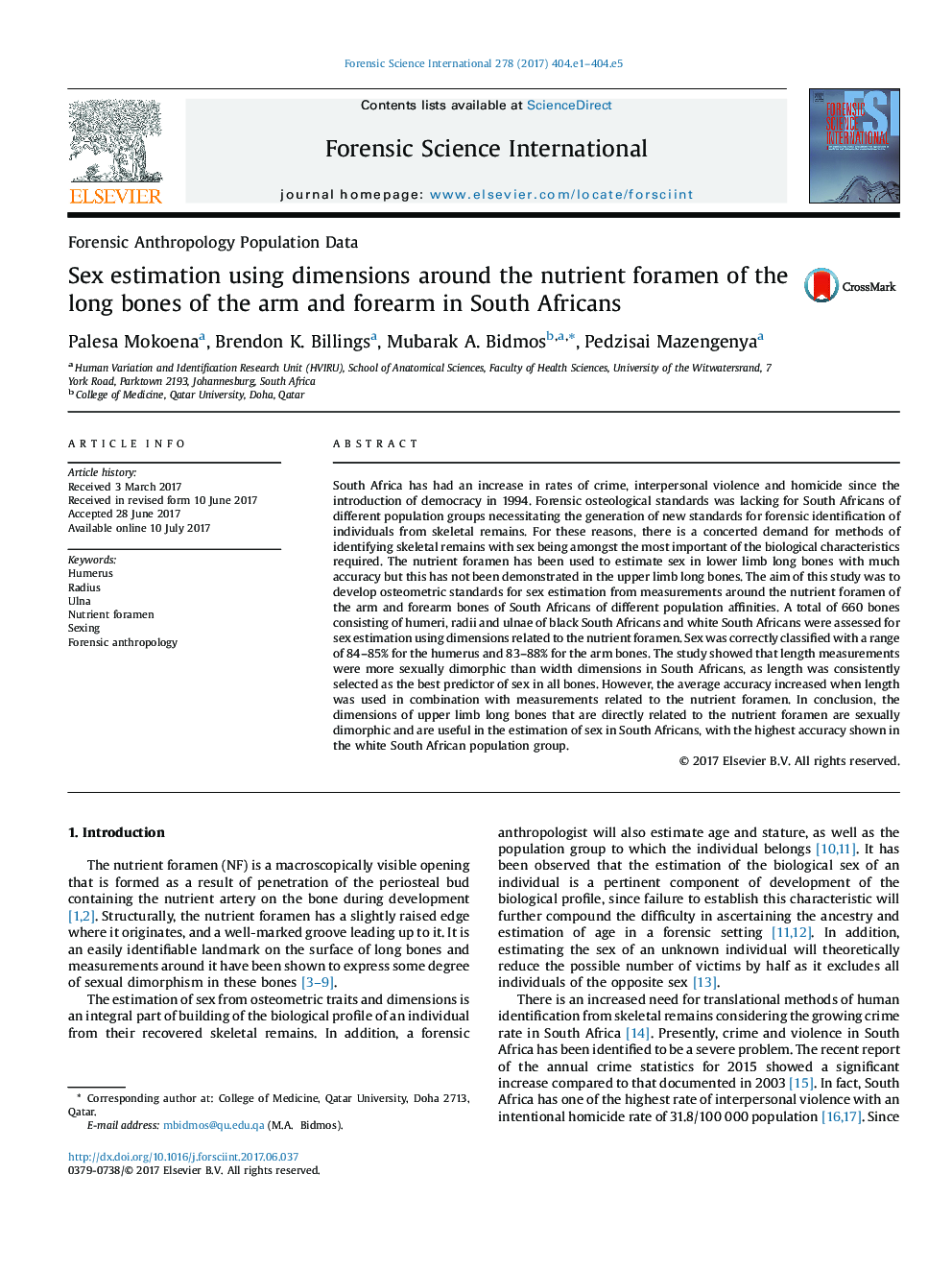| Article ID | Journal | Published Year | Pages | File Type |
|---|---|---|---|---|
| 6462275 | Forensic Science International | 2017 | 5 Pages |
â¢Assessment of measurements around the nutrient foramen of upper limb bones in sex estimation.â¢Data were collected from samples from two population groups in South Africa.â¢Measurements were found to be sexually dimorphic.â¢Combination of measurements produced reasonably high classification rates.
South Africa has had an increase in rates of crime, interpersonal violence and homicide since the introduction of democracy in 1994. Forensic osteological standards was lacking for South Africans of different population groups necessitating the generation of new standards for forensic identification of individuals from skeletal remains. For these reasons, there is a concerted demand for methods of identifying skeletal remains with sex being amongst the most important of the biological characteristics required. The nutrient foramen has been used to estimate sex in lower limb long bones with much accuracy but this has not been demonstrated in the upper limb long bones. The aim of this study was to develop osteometric standards for sex estimation from measurements around the nutrient foramen of the arm and forearm bones of South Africans of different population affinities. A total of 660 bones consisting of humeri, radii and ulnae of black South Africans and white South Africans were assessed for sex estimation using dimensions related to the nutrient foramen. Sex was correctly classified with a range of 84-85% for the humerus and 83-88% for the arm bones. The study showed that length measurements were more sexually dimorphic than width dimensions in South Africans, as length was consistently selected as the best predictor of sex in all bones. However, the average accuracy increased when length was used in combination with measurements related to the nutrient foramen. In conclusion, the dimensions of upper limb long bones that are directly related to the nutrient foramen are sexually dimorphic and are useful in the estimation of sex in South Africans, with the highest accuracy shown in the white South African population group.
